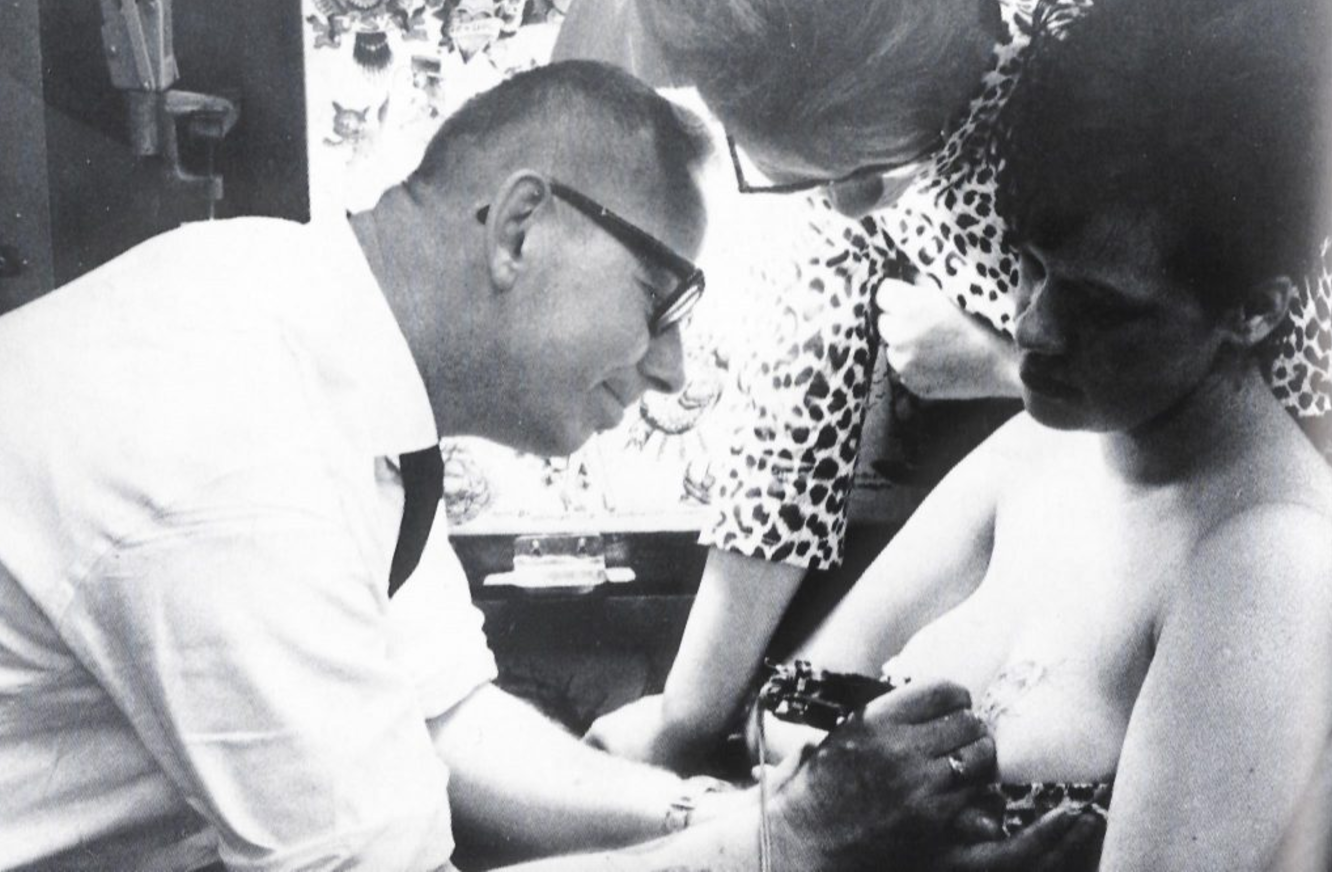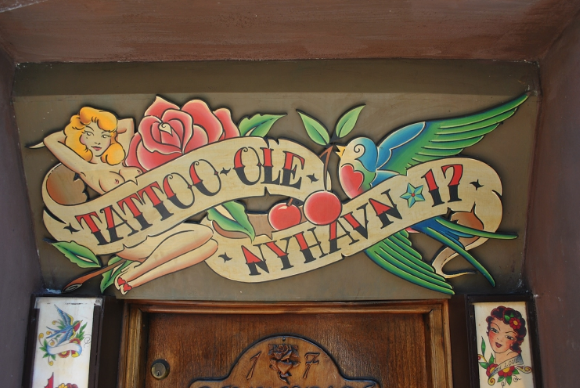A court is set to decide the fate of what is thought to be the world’s oldest remaining tattoo shop still in its original location that has left its mark on sailors and Kings.
Tattoo Ole has operated from the basement of a house in Copenhagen’s Nyhavn since 1884 but may be forced to close later this year after the landlord ended current owner Majbritt Petersen’s lease.
The building at number 17 on the famous street contains a restaurant and bar on other floors and the owner wants to extend the kitchen into the small room the shop occupies.
Petersen, who took over Tattoo Ole in 2010 and is both the shop’s first female tattooist and owner, is challenging the eviction in court on September 14 citing its historical significance to Denmark and the culture of tattooing. Even the King of Denmark, Frederick IX, has been tattooed there.
Under Danish law Petersen says long-term tenants are offered a lot of protection with authorities taking the view that if landlords allow tenants to “build a life… then when it suits the owner, they can’t just take that away”.
Petersen, who tattoos under the name ‘Lille Ole’, added: “We really don’t know what will happen, but in Denmark they tend to be really nice in these situations so we’re hoping he (the judge) will be.”
Petersen said the Copenhagen Museum had previously helped protect the business during earlier attempts to end the lease arguing that it is a “tourist attraction and part of Danish history”. For over 100 years Nyhavn was said to be the only place in Scandinavia anyone could get tattoos, so sailors from Denmark and neighbouring countries would travel there to be inked.
According to Frank Rosenkilde, who set-up a petition to fight the eviction, the landlord had unsuccessfully sought to “throw out both legendary artist Ole Hansen in the eighties and later on Tattoo Bimbo/Jorgen Thorstein”. The petition has over 6,000 signatures.
Rosenkilde, who has been a tattooist for 40 years, called the eviction “disgraceful” adding that closing the shop would “destroy this cultural and important place of tattoo history”.

He added to local media: “We believe that it would be a catastrophe if this historical shop were closed down.
“It’s unique in the world of tattooing and therefore we hope you will support the case by writing a sighed letter, where you state why this shop has to stay open inside this specific location.”
The case is expected to take one day, but the decision will be reserved for six weeks before a determination is issued. If unsuccessful, Peterson will need to close the shop on November 9.
Tattoo Ole began with just a simple table in the far corner of the shop some 133 years ago.
It was started by Hans J. Hansen, who went by the name Tusch-Hansen, before he sold it to Tattoo Jack in the 1940s. In 1947, it then passed over to Ole Valdemar Hansen, who was known worldwide as Ole Hansen. He tattooed there for 40 years. Until the mid-1980s the shop, which has had 14 different owners, was said to have been the centre of tattooing in Scandinavia.
Petersen took over the business in 2010 after then owner, Jorgen Thornstein, passed away. At that stage, Peterson, who started tattooing age 21, had been working there for three years and had no immediate plans to take it over. It was only, and still is only, the second shop she has ever worked in.

“I had no desire to have a tattoo shop… there was talk of taking it over in a few years, but not then… but it has been a good experience,” Petersen recalls, saying she felt she needed to step-up to “protect its (Tattoo Ole’s) history”.
Petersen feels the same way now saying that losing the space, where the original owner Ole Hansen’s flash is still some of the most sought after tattoos, would be “devastating”.
“There’s a lot of history down here, it’s the world’s oldest tattoo shop and it is an important part of Danish society and history and once you lose it you can never get it back… there’s a really good energy here and we must keep it alive.”
Read more about the history of tattooing at Copenhagen’s Nyhavn here.
